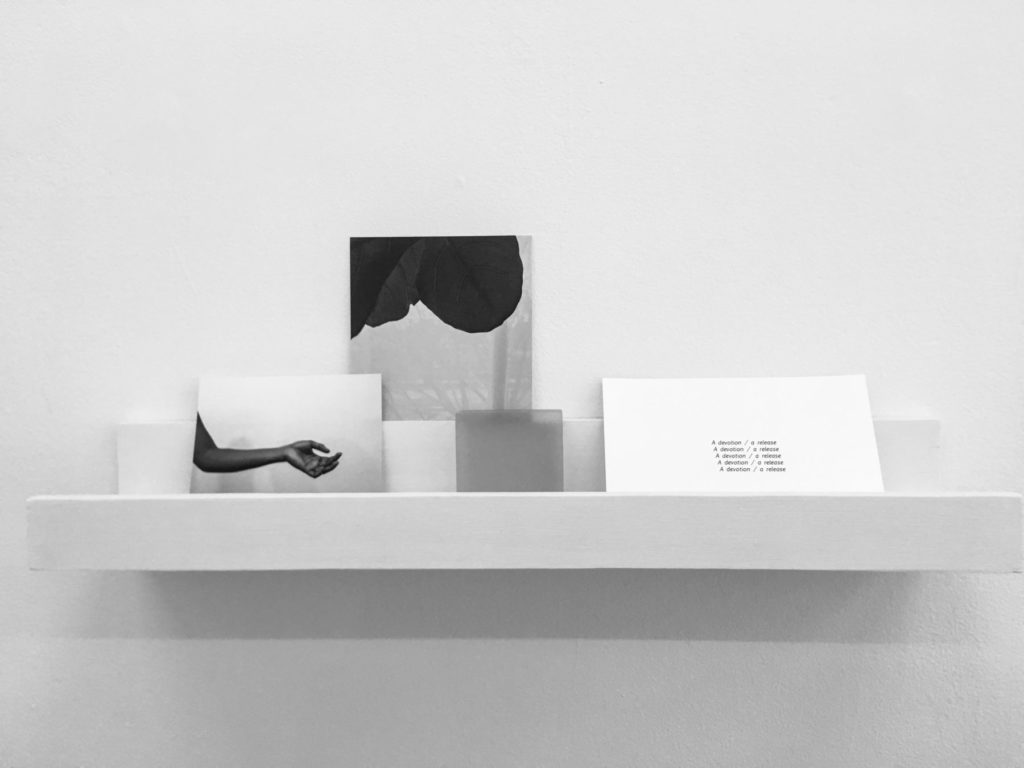Mara Duvra: To allow for breath
Review by Miriam Karraker
The White Page
Nov 10–Dec 10, 2017

Unfolding the form and content of Duvra’s “To allow for breath” poses questions in the way of interiority as it is represented, and moreover, embodied. In one white-framed image, resting on the floor, leaning against the wall, I see an image of two white walls meeting— or where wall and ceiling meet, turned on its side—I can’t say which. Either way, I understand this image as a point of one type of connectivity. By setting the white-framed image out of the viewer’s immediate sight-line, emphasis is placed on the other images, those which are placed at eye-level. In this, the arrangement of images and texts aims to interrogate how sites of interiority are embodied and represented.
Other prints are not framed, and are affixed to the wall in such a way that there is enough space between wall and print for shadow play, beyond what occurs in the images themselves. While the white frames set on the floor embody a weightier tactility, the unframed prints are physically lighter and possess a more ephemeral quality. Two unframed prints feature the same black figure in different poses, each paired with images of portions of either sky or water. I understand these images to represent a fragment of this person’s whole self, one that might extend off the page as we encounter it. I view this figure seen only through the parts made visible, but know there are many other angles by which she can be understood.
“To allow for breath” takes its title from Gabrielle Civil’s memoir in performance, Swallow the Fish: “To allow for breath, space, and time. To allow also for the body.” A body cannot be understood by one angle or glimpse of surface, which the exhibition text furthers by featuring text fragments, presented as footnotes from creative and critical works. Aided by the presence of a lamp and chair, Duvra creates an abbreviated library; she gives space and time for considering how these pieces of language intersect in their form and content. Text fragments and other physical seams represent the interior of the singular body from which they came. Duvra’s chosen titles are wide ranging, mostly hybrid texts examining fragmentation, performance, Eros, and black subjectivity. I notice Claudia Rankine’s Citizen, hearing Duvra’s citation echo a reminder: “Yes and, the body has a memory.” The body is connected to other bodies through and in language, but always maintains its own unique cadence and syntactical footprint. The invitation to engage in a reading ritual also acts as a window into Duvra’s creative process, or a way of exposing how fragment correlates to larger body. In this, I wonder what other ritual, of Duvra’s practice or otherwise, might be presented to deepen the work’s interest in intimately understanding an embodied interiority of subjects through limited fragments.
